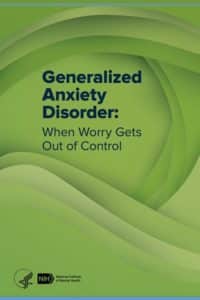Anxiety/Panic Attacks are conditions commonly improved with EMDR and/or IASIS Microcurrent Neurofeedback. A combination of EMDR with IASIS as an add-on commonly promotes improvements in Anxiety and Panic Attacks. Moreover, a plan that includes both EMDR and IASIS will promote desensitation and reprocessing, promoting the brain’s engagement in alleviating the symptoms of trauma, and disturbances associated with Anxiety and Panic. Give us a call to discuss your specific needs.
Generalized Anxiety Disorder:
When Worry Gets Out of Control
Do you often find yourself worrying about everyday issues for no obvious reason? Are you always waiting for disaster to strike or excessively worried about things such as health, money, family, work, or school?
If so, you may have a type of anxiety disorder called generalized anxiety disorder (GAD). GAD can make daily life feel like a constant state of worry, fear, and dread. The good news is GAD is treatable. Learn more about the symptoms of GAD and how to find help.
What is generalized anxiety disorder?
Occasional anxiety is a normal part of life. Many people may worry about things such as health, money, or family problems. But people with GAD feel extremely worried or nervous more frequently about these and other things—even when there is little or no reason to worry about them. GAD usually involves a persistent feeling of anxiety or dread that interferes with how you live your life. It is not the same as occasionally worrying about things or experiencing anxiety due to stressful life events. People living with GAD experience frequent anxiety for months, if not years.
GAD develops slowly. It often starts around age 30, although it can occur in childhood. The disorder is more common in women than in men.
What are the signs and symptoms of generalized anxiety disorder?
People with GAD may:
- Worry excessively about everyday things
- Have trouble controlling their worries or feelings of nervousness
- Know that they worry much more than they should
- Feel restless and have trouble relaxing
- Have a hard time concentrating
- Startle easily
- Have trouble falling asleep or staying asleep
- Tire easily or feel tired all the time
- Have headaches, muscle aches, stomachaches, or unexplained pains
- Have a hard time swallowing
- Tremble or twitch
- Feel irritable or “on edge”
- Sweat a lot, feel lightheaded or feel out of breath
- Have to go to the bathroom frequently
Children and teens with GAD often worry excessively about:
- Their performance in activities such as school or sports
- Catastrophes, such as earthquakes or war
- The health of others, such as family members
Adults with GAD are often highly nervous about everyday circumstances, such as:
- Job security or performance
- Health
- Finances
- The health and well-being of their children or other family members
- Being late
- Completing household chores and other responsibilities
Both children and adults with GAD may experience physical symptoms such as pain, fatigue, or shortness of breath that make it hard to function and that interfere with daily life.
Symptoms may fluctuate over time and are often worse during times of stress—for example—with a physical illness, during school exams, or during a family or relationship conflict.

En español
Download PDF
Download ePub
Order a free hardcopy
Source: National Institute of Mental Health (2021). Anxiety Disorders. Retrieved December 28, 2022, from https://www.nimh.nih.gov/health/topics/anxiety-disorders
